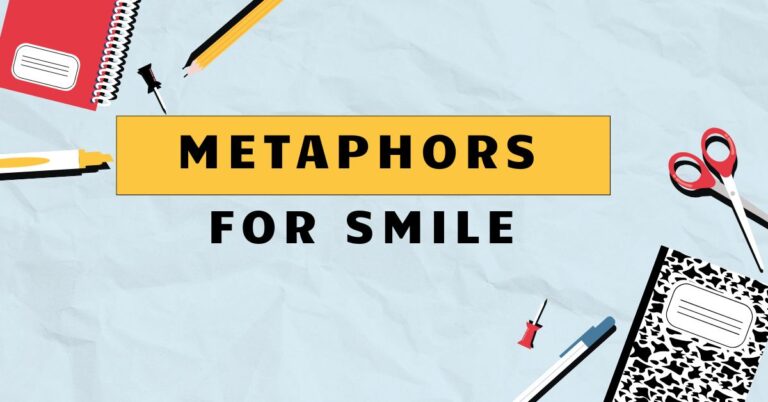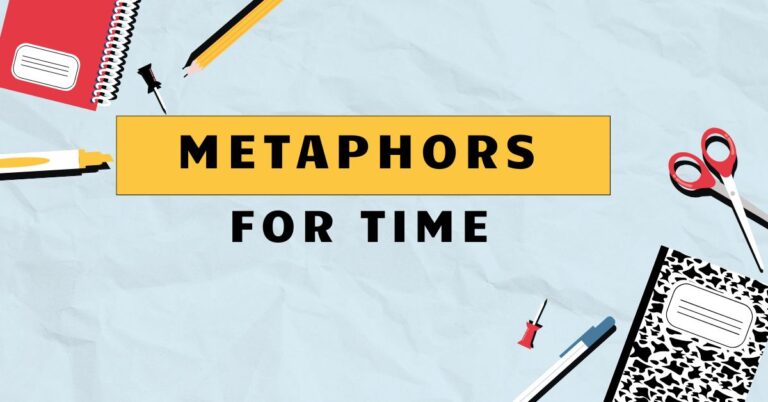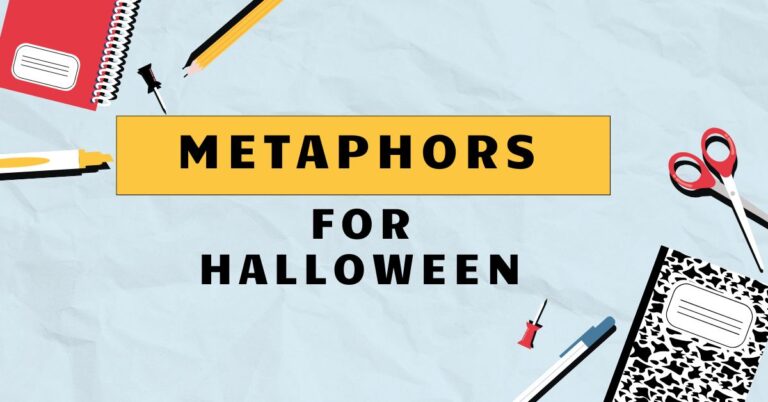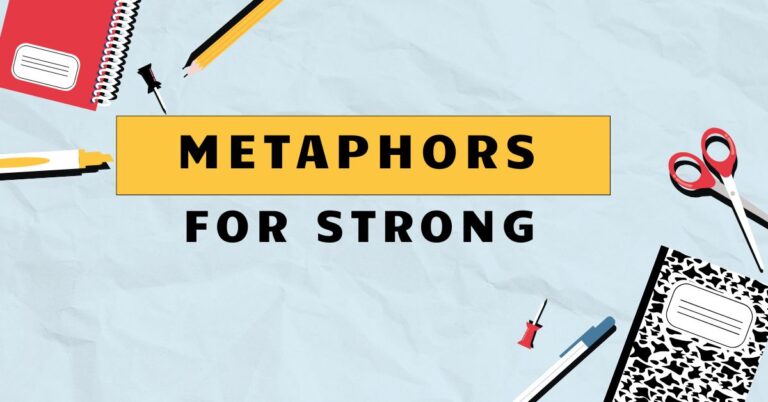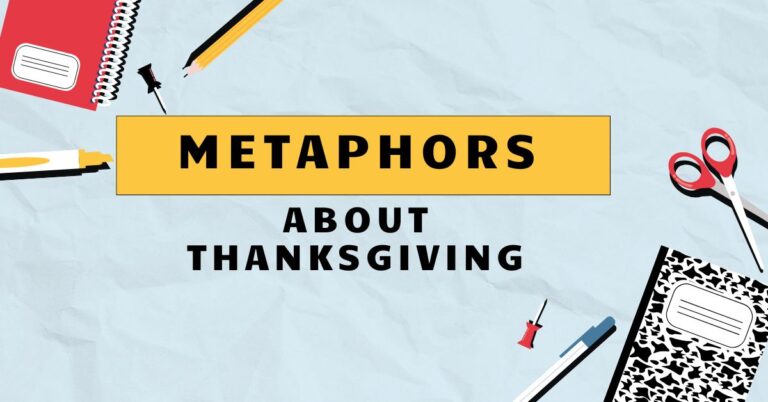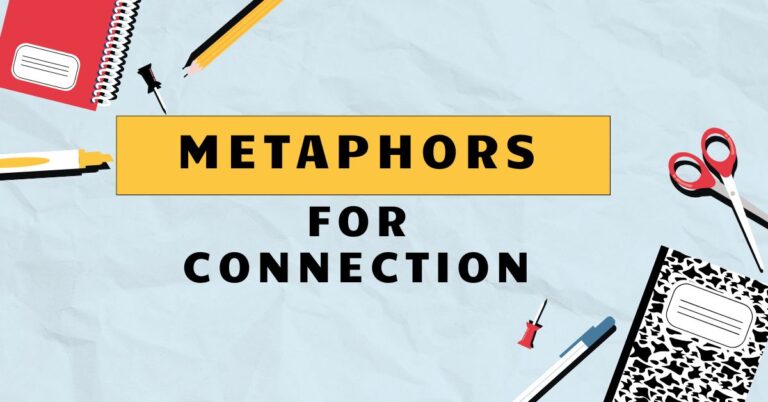47 Hair Metaphors: A Comprehensive Guide to Figurative Language
Metaphors are powerful tools in the English language, allowing us to create vivid imagery and convey complex ideas in a concise and engaging manner. When applied to hair, metaphors can transform simple descriptions into evocative portraits, painting a picture of personality, age, or even emotional state.
Understanding hair metaphors not only enriches your comprehension of literature and everyday conversation but also enhances your own ability to communicate with flair and precision. This article delves into the fascinating world of hair metaphors, exploring their types, structures, and usage, making it an invaluable resource for English learners of all levels.
Whether you’re a student analyzing poetry, a writer crafting compelling characters, or simply someone looking to elevate your language skills, this guide will equip you with the knowledge and practice needed to master the art of hair metaphors. Prepare to unlock a new dimension of linguistic expression as we explore the diverse and captivating realm of figurative language related to hair.
Table of Contents
- 1. Definition of Hair Metaphors
- 2. Structural Breakdown of Hair Metaphors
- 3. Types and Categories of Hair Metaphors
- 4. Examples of Hair Metaphors
- 5. Usage Rules for Hair Metaphors
- 6. Common Mistakes with Hair Metaphors
- 7. Practice Exercises
- 8. Advanced Topics in Hair Metaphors
- 9. Frequently Asked Questions
- 10. Conclusion
1. Definition of Hair Metaphors
A metaphor is a figure of speech that directly compares two unrelated things, asserting that they are the same, or that one possesses qualities of the other. Unlike similes, which use “like” or “as” to make a comparison, metaphors state the comparison directly.
Hair metaphors, therefore, use the characteristics of hair – its color, texture, length, style, or condition – to describe something else, often a person’s personality, emotions, or circumstances.
Hair metaphors function by transferring the connotations associated with a particular hair attribute to another subject. For instance, describing someone’s hair as “a cascade of gold” not only describes the hair’s color but also evokes feelings of richness, beauty, and preciousness.
The context in which a hair metaphor is used is crucial for understanding its intended meaning. The same metaphor can have different interpretations depending on the situation and the overall tone of the text.
Hair metaphors are frequently used in literature, poetry, and everyday speech to add depth and imagery to descriptions. They can be used to emphasize a character’s inner qualities, reflect the mood of a scene, or simply add a touch of creativity to language.
Understanding hair metaphors allows for a deeper appreciation of the nuances of language and the art of figurative expression. The use of metaphors, in general, makes language more interesting and engaging for both the writer and the reader.
2. Structural Breakdown of Hair Metaphors
The structure of a hair metaphor typically involves two key elements: thetenorand thevehicle. The tenor is the subject being described, while the vehicle is the hair-related image or concept used to describe the tenor.
The connection between the tenor and the vehicle is what creates the metaphorical meaning.
Consider the example: “Her hair was a storm of curls.” In this case, the tenor is “her hair,” and the vehicle is “storm.” The metaphor works because the chaotic and untamed nature of a storm is being associated with the appearance of her curly hair. The shared qualities of wildness and lack of control create the metaphorical link.
The effectiveness of a hair metaphor depends on the clarity and relevance of the connection between the tenor and the vehicle. A strong metaphor creates a vivid and easily understood image, while a weak metaphor may be confusing or ineffective.
The choice of words and the overall context play a significant role in determining the success of a hair metaphor. The power of a metaphor lies in its ability to create a new understanding or perspective on the tenor by associating it with the vehicle.
Hair metaphors can also be extended or complex. An extended metaphor continues the comparison throughout a longer passage, developing the initial image in more detail.
A complex metaphor may involve multiple layers of meaning, with the hair image representing several different aspects of the tenor. For example, describing someone’s hair as “a tangled web of worries” combines the physical image of tangled hair with the emotional state of being burdened by worries.
3. Types and Categories of Hair Metaphors
Hair metaphors can be categorized based on the specific aspect of hair being used as the vehicle. Here are some common categories:
3.1. Color Metaphors
Color metaphors use the color of hair to represent qualities such as age, personality, or emotional state. For example, “silver strands of wisdom” associates gray hair with experience and knowledge.
Color metaphors are particularly effective because colors often have strong cultural and emotional associations.
3.2. Texture Metaphors
Texture metaphors use the texture of hair – such as silky, wiry, or coarse – to describe qualities such as smoothness, resilience, or roughness. “Hair like spun silk” suggests elegance and grace, while “hair like tangled wire” might imply a difficult or unyielding personality.
The tactile qualities of hair texture make these metaphors particularly vivid.
3.3. Length Metaphors
Length metaphors use the length of hair to represent qualities such as freedom, restraint, or femininity. Long hair is often associated with freedom and wildness, while short hair may suggest practicality or conformity.
“Her long hair streamed behind her like a banner of freedom” evokes a sense of liberation and unrestrained movement.
3.4. Style Metaphors
Style metaphors use the way hair is styled – such as braided, curled, or unkempt – to represent qualities such as orderliness, creativity, or neglect. A carefully braided hairstyle might suggest discipline and control, while messy, unkempt hair could indicate a carefree or rebellious attitude.
The style of hair is often a deliberate choice, making it a powerful symbol.
3.5. Condition Metaphors
Condition metaphors use the condition of hair – such as healthy, damaged, or lifeless – to represent qualities such as vitality, resilience, or despair. Shiny, healthy hair can symbolize youth and energy, while dull, lifeless hair might suggest illness or emotional exhaustion.
The condition of hair is often seen as a reflection of overall well-being.
4. Examples of Hair Metaphors
Here are some examples of hair metaphors, organized by category:
4.1. Color Metaphor Examples
The following table presents examples of color metaphors related to hair, each with a brief explanation of the implied meaning.
| Metaphor | Implied Meaning |
|---|---|
| Her hair was a river of gold. | Suggests beauty, richness, and radiance. |
| Strands of silver wove through his dark hair, a testament to time. | Indicates age, experience, and wisdom. |
| Her hair was the color of midnight. | Implies mystery, darkness, and elegance. |
| His fiery red hair mirrored his passionate personality. | Represents intensity, energy, and boldness. |
| Her hair was a cascade of bronze. | Suggests warmth, strength, and earthiness. |
| Her platinum blonde hair screamed wealth and privilege. | Implies luxury, artificiality, and high status. |
| His hair was the color of autumn leaves. | Represents change, transition, and nostalgia. |
| Her hair was the shade of burnt umber. | Indicates earthiness, simplicity, and natural beauty. |
| Her raven hair contrasted sharply with her pale skin. | Implies mystery, elegance, and a touch of darkness. |
| Her hair was a halo of golden light. | Suggests purity, innocence, and beauty. |
| His hair was the color of faded parchment. | Indicates age, fragility, and wisdom. |
| Her hair was a tapestry of auburn hues. | Represents complexity, richness, and warmth. |
| His hair was a shock of white against his tanned face. | Implies age, experience, and a life lived outdoors. |
| Her hair was the colour of honey. | Suggests sweetness, warmth, and natural beauty. |
| Her hair was a dark chocolate river flowing down her back. | Implies richness, indulgence, and sensuality. |
| His hair was the color of rust. | Indicates age, decay, and a sense of neglect. |
| Her hair was a vibrant canvas of electric blue. | Represents creativity, individuality, and boldness. |
| His hair was the color of sea foam. | Suggests tranquility, calmness, and a connection to nature. |
| Her hair was a muted shade of ash blonde. | Implies sophistication, elegance, and understated beauty. |
| His hair was the color of jet. | Represents darkness, mystery, and a sense of depth. |
| Her hair was a cascade of strawberry blonde. | Suggests youthfulness, sweetness, and vibrancy. |
| His hair was the color of sand. | Indicates neutrality, simplicity, and a connection to the earth. |
| Her hair was a vibrant shade of emerald green. | Represents nature, growth, and vitality. |
| His hair was the color of charcoal. | Implies darkness, intensity, and a sense of mystery. |
| Her hair was a tapestry of grey. | Represents age, wisdom, and experience. |
| His hair was a dark forest of tangled curls. | Indicates wildness, untamed nature, and mystery. |
| Her hair was the color of lavender fields. | Suggests calmness, serenity, and a sense of peace. |
4.2. Texture Metaphor Examples
This table illustrates texture metaphors related to hair. Each example includes an explanation of its implied meaning.
| Metaphor | Implied Meaning |
|---|---|
| Her hair was a silken waterfall. | Suggests smoothness, elegance, and grace. |
| His hair was a tangled mess of barbed wire. | Implies roughness, difficulty, and unyielding nature. |
| Her hair was like spun gold. | Represents fineness, preciousness, and beauty. |
| His hair felt like coarse straw. | Indicates dryness, roughness, and lack of care. |
| Her hair was a cloud of fluffy cotton. | Suggests softness, lightness, and comfort. |
| His hair was a wiry, untamable beast. | Implies stubbornness, resilience, and wildness. |
| Her hair flowed like liquid velvet. | Suggests luxury, smoothness, and sensuality. |
| His hair was a matted, unkempt rug. | Indicates neglect, disorder, and a lack of concern for appearance. |
| Her hair was a cascade of delicate feathers. | Suggests lightness, fragility, and ethereal beauty. |
| His hair was as stiff as horsehair. | Implies rigidity, strength, and a lack of flexibility. |
| Her hair was a soft, undulating wave. | Suggests calmness, fluidity, and natural grace. |
| His hair was a thicket of unruly thorns. | Indicates difficulty, pain, and a defensive nature. |
| Her hair was a shimmering curtain of silk. | Suggests elegance, beauty, and a sense of mystery. |
| His hair was a bristly, unyielding brush. | Implies stubbornness, roughness, and a no-nonsense attitude. |
| Her hair was a gossamer web of fine strands. | Suggests delicacy, intricacy, and ethereal beauty. |
| His hair was a dense, impenetrable forest. | Indicates wildness, mystery, and a sense of being lost. |
| Her hair felt like the softest cashmere. | Suggests luxury, comfort, and exquisite softness. |
| His hair was like a steel wool pad. | Implies roughness, strength, and a utilitarian nature. |
| Her hair was a delicate tapestry of interwoven strands. | Suggests intricacy, beauty, and a sense of artistry. |
| His hair was a tangled bird’s nest. | Indicates disorganization, neglect, and a lack of order. |
| Her hair was a rippling stream of liquid light. | Suggests fluidity, beauty, and a radiant glow. |
| His hair was a stiff and unyielding broom. | Implies practicality, rigidity, and a no-nonsense attitude. |
| Her hair was a cloud of dandelion fluff. | Suggests lightness, freedom, and a carefree spirit. |
| His hair was a rough and weathered thatch. | Indicates age, resilience, and a connection to nature. |
| Her hair was a delicate spiderweb after a morning dew. | Suggests intricacy, fragility, and natural beauty. |
| His hair was a tangled mess of seaweed. | Implies disarray, a connection to the sea, and a sense of wildness. |
4.3. Length Metaphor Examples
The table below presents length metaphors related to hair, along with their implied meanings.
| Metaphor | Implied Meaning |
|---|---|
| Her hair cascaded down her back like a waterfall of freedom. | Suggests liberation, unrestrained beauty, and a free spirit. |
| His short, cropped hair spoke of discipline and conformity. | Implies practicality, orderliness, and adherence to rules. |
| Her hair was a flowing river of endless possibilities. | Represents potential, creativity, and a sense of boundlessness. |
| His closely shaven head suggested a no-nonsense approach to life. | Indicates directness, efficiency, and a lack of sentimentality. |
| Her long, unbound hair was a symbol of her wild nature. | Suggests untamed beauty, independence, and a rebellious spirit. |
| His neatly trimmed hair reflected his meticulous personality. | Implies attention to detail, orderliness, and a sense of control. |
| Her floor-length hair was a testament to her patience and dedication. | Suggests commitment, perseverance, and a love of beauty. |
| His buzz cut gave him the air of a soldier. | Indicates discipline, uniformity, and a sense of duty. |
| Her hair reached her waist, a symbol of her femininity and grace. | Suggests traditional beauty, elegance, and a gentle nature. |
| His barely-there stubble suggested a rebellious, carefree spirit. | Implies nonconformity, nonchalance, and a lack of concern for appearances. |
| Her long, flowing locks were a banner of her bohemian spirit. | Suggests artistic freedom, unconventionality, and a love of self-expression. |
| His military-short hair conveyed an image of authority and strength. | Indicates power, control, and a sense of command. |
| Her hair, long enough to sit on, spoke of a fairytale princess. | Suggests enchantment, romance, and a sense of wonder. |
| His shaved head reflected a deliberate choice to stand apart. | Implies individuality, a rejection of norms, and a bold statement. |
4.4. Style Metaphor Examples
This table offers examples of style metaphors related to hair, along with explanations of their implied meanings.
| Metaphor | Implied Meaning |
|---|---|
| Her intricately braided hair was a testament to her patience and attention to detail. | Suggests orderliness, discipline, and a meticulous nature. |
| His messy, unkempt hair reflected his carefree and rebellious attitude. | Implies nonconformity, a lack of concern for appearances, and a free spirit. |
| Her carefully coiffed hair was a shield of sophistication. | Suggests elegance, refinement, and a desire to present a polished image. |
| His slicked-back hair gave him the air of a 1950s greaser. | Implies rebelliousness, coolness, and a vintage style. |
| Her hair, piled high in an elaborate updo, screamed extravagance and luxury. | Suggests wealth, opulence, and a desire to impress. |
| His dreadlocks were a symbol of his Rastafarian beliefs and connection to nature. | Implies spirituality, naturalness, and a rejection of mainstream culture. |
| Her perfectly curled hair was a mask of artificial perfection. | Suggests superficiality, a desire to conform, and a lack of authenticity. |
| His spiky hair reflected his edgy and rebellious personality. | Implies nonconformity, boldness, and a desire to stand out. |
| Her neatly pinned-up hair conveyed an image of efficiency and practicality. | Suggests orderliness, competence, and a focus on getting things done. |
| His long, flowing hair, adorned with flowers, spoke of a free-spirited hippie. | Implies peace, love, and a connection to nature. |
4.5. Condition Metaphor Examples
The following examples represent condition metaphors related to hair, with explanations of their implied meanings.
| Metaphor | Implied Meaning |
|---|---|
| Her shiny, healthy hair radiated youth and vitality. | Suggests energy, good health, and a youthful spirit. |
| His dull, lifeless hair reflected his exhaustion and despair. | Implies sadness, depression, and a lack of energy. |
| Her brittle, damaged hair was a sign of stress and neglect. | Suggests hardship, emotional strain, and a lack of self-care. |
| His thick, lustrous hair spoke of good genes and a healthy lifestyle. | Implies natural beauty, well-being, and a fortunate disposition. |
| Her thinning hair was a reminder of her advancing age. | Suggests the passage of time, loss of youth, and mortality. |
| His greasy, unwashed hair reflected his apathy and lack of motivation. | Implies laziness, neglect, and a lack of concern for appearances. |
| Her vibrant, well-nourished hair was a testament to her self-care routine. | Suggests discipline, attention to detail, and a love of self. |
| His dry, frizzy hair was a result of years of chemical treatments and abuse. | Implies damage, artificiality, and a lack of natural beauty. |
| Her soft, silky hair was a sign of inner peace and contentment. | Suggests happiness, tranquility, and a sense of well-being. |
| His unruly, tangled hair reflected his chaotic and unpredictable life. | Implies disorganization, instability, and a lack of control. |
5. Usage Rules for Hair Metaphors
When using hair metaphors, it’s important to consider the following rules to ensure clarity and effectiveness:
- Relevance: The connection between the hair attribute and the quality you’re trying to convey should be clear and relevant. A weak or nonsensical connection will confuse the reader.
- Context: Consider the context in which you’re using the metaphor. The same metaphor can have different meanings depending on the situation and the overall tone of the text.
- Originality: While some common hair metaphors are widely understood, try to create original and imaginative metaphors to make your writing more engaging.
- Clarity: Avoid overly complex or obscure metaphors that are difficult to understand. The goal is to enhance understanding, not to confuse the reader.
- Consistency: If you’re using an extended metaphor, maintain consistency in the imagery and meaning throughout the passage.
- Cultural Sensitivity: Be mindful of cultural associations with hair and avoid using metaphors that could be offensive or insensitive.
Exceptions may occur in creative writing where unconventional or surreal metaphors are used for artistic effect. However, in most cases, adhering to these rules will ensure that your hair metaphors are effective and meaningful.
6. Common Mistakes with Hair Metaphors
Here are some common mistakes to avoid when using hair metaphors:
| Incorrect | Correct | Explanation |
|---|---|---|
| His hair was a brick wall. | His hair was a tangled thicket. | The connection between hair and a brick wall is unclear. A thicket better conveys the idea of tangled, unmanageable hair. |
| Her hair was like a rainbow of sadness. | Her hair was a dull shadow. | A rainbow is associated with happiness, not sadness. Using ‘dull shadow’ is more appropriate to convey sadness. |
| His hair was as long as my foot. | His hair was a curtain that framed his face. | The comparison to a foot is literal and lacks metaphorical depth. “Curtain” creates a better visual image. |
| Her hair was a tornado of calmness. | Her hair was a calm, flowing river. | A tornado is chaotic, the opposite of calmness. A flowing river suggests peace. |
| His hair was a silent symphony. | His hair was a wild, untamed mane. | “Silent symphony” is contradictory. “Wild, untamed mane” is a more fitting metaphor for untamed hair. |
7. Practice Exercises
Test your understanding of hair metaphors with these exercises:
Exercise 1: Identify the Metaphor
Identify the hair metaphor in each sentence and explain its implied meaning.
| Question | Answer |
|---|---|
| 1. Her hair was a spun gold waterfall. | Metaphor: Spun gold waterfall. Implied meaning: Beauty, preciousness, and fluidity. |
| 2. His hair was a tangled mess of barbed wire. | Metaphor: Tangled mess of barbed wire. Implied meaning: Roughness, difficulty, and unyielding nature. |
| 3. Her hair was a river of midnight. | Metaphor: River of midnight. Implied meaning: Mystery, darkness, and elegance. |
| 4. His hair was silver threads of wisdom. | Metaphor: Silver threads of wisdom. Implied meaning: Age, experience, and knowledge. |
| 5. Her hair was a gossamer web of fine strands. | Metaphor: Gossamer web. Implied meaning: Delicacy, intricacy, and ethereal beauty. |
| 6. His hair was a dark forest of tangled curls. | Metaphor: Dark forest. Implied meaning: Wildness, untamed nature, and mystery. |
| 7. Her hair was a cascade of bronze. | Metaphor: Cascade of bronze. Implied meaning: Warmth, strength, and earthiness. |
| 8. His hair was a shock of white against his tanned face. | Metaphor: Shock of white. Implied meaning: Age, experience, and a life lived outdoors. |
| 9. Her hair was the color of honey. | Metaphor: Color of honey. Implied meaning: Sweetness, warmth, and natural beauty. |
| 10. His hair was the color of rust. | Metaphor: Color of rust. Implied meaning: Age, decay, and a sense of neglect. |
Exercise 2: Create Your Own Metaphors
Create a hair metaphor for each of the following scenarios:
| Scenario | Possible Metaphor |
|---|---|
| 1. Describing someone with very frizzy hair. | Her hair was a storm cloud of frizz. |
| 2. Describing someone with very straight, sleek hair. | Her hair was a polished ebony slide. |
| 3. Describing someone with bright red hair. | His hair was a bonfire atop his head. |
| 4. Describing someone with long, flowing grey hair. | Her hair was a silver river flowing down her back. |
| 5. Describing someone with neatly styled, perfect hair. | Her hair was a perfectly sculpted masterpiece. |
| 6. Describing someone with short, spiky hair. | His hair was a crown of defiant spikes. |
| 7. Describing someone with thick, unruly hair. | Her hair was a wild, untamed jungle. |
| 8. Describing someone with thin, lifeless hair. | His hair was a whisper of what it once was. |
| 9. Describing someone with dark, curly hair. | Her hair was a labyrinth of ebony curls. |
| 10. Describing someone with bleached blonde hair. | Her hair was a sun-bleached halo. |
Exercise 3: Correct the Incorrect Metaphors
Identify the incorrect hair metaphor and correct it to make it more appropriate.
| Question | Answer |
|---|---|
| 1. His hair was a singing refrigerator. | Corrected: His hair was a tangled bird’s nest. |
| 2. Her hair was like a dancing elephant. | Corrected: Her hair was like a silken waterfall. |
| 3. His hair was a flying bicycle. | Corrected: His hair was a bristly, unyielding brush. |
| 4. Her hair was a quiet volcano. | Corrected: Her hair was a dark, brooding cloud. |
| 5. His hair was a happy calculator. | Corrected: His hair was a matted, unkempt rug. |
| 6. Her hair was a running shoe. | Corrected: Her hair was a shimmering curtain of silk. |
| 7. His hair was a barking tree. | Corrected: His hair was a wiry, untamable beast. |
| 8. Her hair was a sleeping computer. | Corrected: Her hair was a flowing river of endless possibilities. |
| 9. His hair was a swimming cloud. | Corrected: His hair was a thicket of unruly thorns. |
| 10. Her hair was a writing spoon. | Corrected: Her hair was a tapestry of auburn hues. |
8. Advanced Topics in Hair Metaphors
For advanced learners, exploring the use of hair metaphors in literature and poetry can provide deeper insights into their artistic and cultural significance. Analyzing how different authors use hair metaphors to create character, mood, and theme can enhance your understanding of literary analysis.
Consider the use of hair metaphors in Victorian literature, where hair was often a symbol of femininity and virtue. Examining how poets like Tennyson and Browning used hair imagery can reveal Victorian ideals and societal expectations.
Similarly, exploring the use of hair metaphors in contemporary literature can shed light on modern attitudes towards identity, beauty, and self-expression.
Another advanced topic is the study of the cultural variations in hair metaphors. Different cultures have different associations with hair color, length, and style, which can influence the interpretation of hair metaphors.
Researching these cultural nuances can broaden your understanding of cross-cultural communication and literary analysis. For example, long hair might symbolize freedom in one culture but be associated with mourning in another.
Finally, experimenting with creating your own complex and extended hair metaphors can challenge your creativity and enhance your writing skills. Try to develop a hair metaphor that spans an entire paragraph or even a whole poem, exploring multiple layers of meaning and imagery.
This exercise can help you master the art of figurative language and develop a unique voice as a writer.
9. Frequently Asked Questions
Here are some frequently asked questions about hair metaphors:
- What is the difference between a metaphor and a simile?
A metaphor directly equates two unlike things, while a simile uses “like” or “as” to make a comparison. For example, “Her hair was a golden waterfall” is a metaphor, while “Her hair was like a golden waterfall” is a simile. - Why are hair metaphors so common in literature?
Hair is a visually striking and culturally significant feature, making it a rich source of imagery for writers. Hair metaphors can effectively convey character traits, emotions, and themes. - How can I create effective hair metaphors?
Focus on making a clear and relevant connection between the hair attribute and the quality you’re trying to convey. Use vivid language and consider the context in which you’re using the metaphor. - Are there any hair metaphors that I should avoid?
Avoid metaphors that are clichéd, confusing, or culturally insensitive. Strive for originality and clarity in your writing. - Can a hair metaphor be used to describe something other than a person?
Yes, hair metaphors can be used to describe objects, landscapes, or abstract concepts. For example, “The grass was a tangled head of green hair.” - How do cultural differences affect the interpretation of hair metaphors?
Different cultures have different associations with hair, which can influence the interpretation of hair metaphors. Be mindful of these cultural nuances when analyzing or creating metaphors. - What role does context play in understanding hair metaphors?


